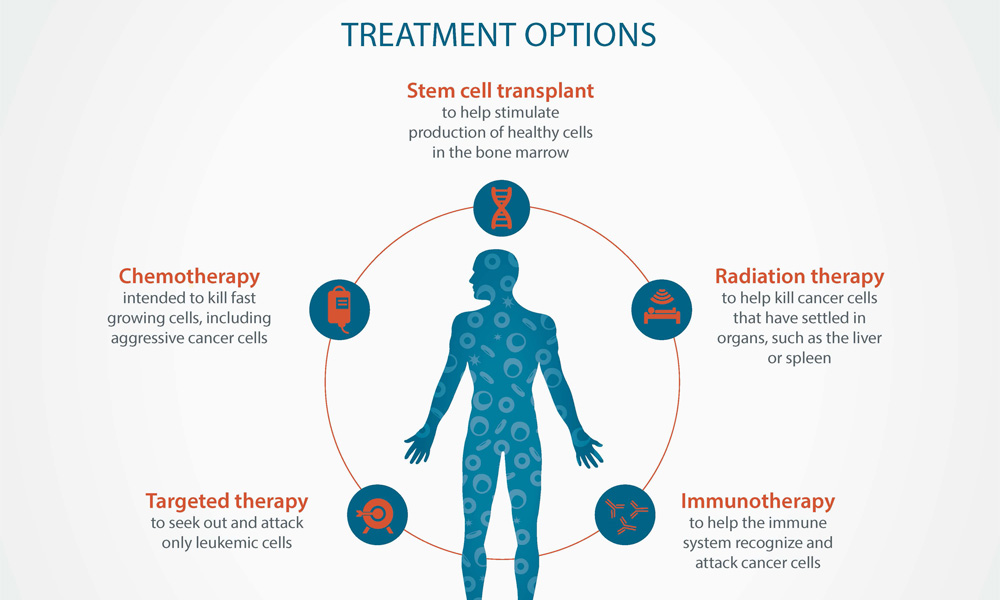

This page was reviewed under our medical and editorial policy by
Maurie Markman, MD, President, Medicine & Science
This page was updated on September 12, 2022.
Many evidence-based treatment options are available to treat leukemia, though they vary depending on the overall health and age of the patient, the type of leukemia and whether it’s spread to other parts of the body.
Expert cancer care teams can recommend a treatment plan, explain how and why it was chosen, and answer any questions along the way.
Stem cell transplantation: Also called hematopoietic progenitor cell transplantation or bone marrow transplant, this procedure infuses healthy blood-forming stem cells into the body. Stem cells are collected from the bone marrow, circulating (peripheral) blood and/or umbilical cord blood before chemotherapy or radiation therapy treatments. Stem cells may come from the patient (autologous stem cell transplant) or from a matched donor (allogeneic stem cell transplant).
Learn more about stem cell transplantation for leukemia
Radiation therapy: This treatment for leukemia may be used to destroy leukemia cells, to relieve discomfort caused by an enlarged liver or spleen, or swollen lymph nodes, or to help treat pain from bone damage caused by leukemia cells growing in the bone marrow. Radiation therapy may also be given in low doses just before a stem cell transplant.
Learn more about radiation therapy for leukemia
Chemotherapy: Chemotherapy is typically the primary treatment option for many forms of leukemia, often consisting of giving several drugs together in a set regimen. Because each medication destroys tumor cells in different ways, a combination of drugs may make the cells more vulnerable to treatment.
Learn more about chemotherapy for leukemia
Targeted therapy: Targeted therapy drugs may be used in combination with other leukemia treatments, such as chemotherapy. Unlike standard chemotherapy, which affects all cells in the body, targeted therapy directly attacks leukemia cells, helping to reduce damage to healthy cells and reduce side effects.
Immunotherapy: Immunotherapy is a treatment that uses medication to help the immune system identify and destroy cancer cells. Several types of immunotherapies may be used to treat leukemia, such as monoclonal antibodies and donor infusion treatments (also called donor lymphocyte infusion, or DLI), and many are used in combination with other treatments. Doctors may use a type of immunotherapy called chimeric antigen receptor (CAR) T-cell therapy to treat leukemia. This treatment is a type of cell-based genetic therapy that works by directing T-cells, which are part of the body’s immune system, to locate and kill cancer cells. During the treatment, T-cells are taken from the patient, infused with the receptor gene (the CAR) that helps them attach to cancer cells, and then returned to the body.

As part of our commitment to providing new and innovative treatments, our doctors may recommend that you enroll in a clinical trial that may offer you access to leukemia treatment options that would otherwise be unavailable to you. Each leukemia patient is considered for a clinical trial on an individual basis and must meet strict and specific criteria.
With a new generation of leukemia drugs and treatments in development, clinical trials are a critical testing ground for determining their effectiveness and safety. Talk to your doctor about whether a clinical trial is an option for you and ask about the risks and requirements involved.
Search clinical trials for leukemia
Next topic: How is leukemia treated with stem cell transplantation?